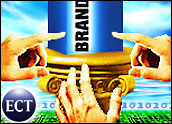
I have been operating in tired mode continuously since the conventions, and by the time you read this, I may have gotten some serious sleep, though I doubt it because this is Dreamforce week after all. There have been too many things competing for my attention after dinner each evening, and none of them resembles a good book or a client. In no particular order, the list includes the Red Sox, Patriots, Republicans and Democrats.
If you are reading this on Wednesday, you know that the Phillies are world champs of baseball, Salesforce.com made a few important announcements this week and Barack Obama is president. Now, I don’t pretend to be a political sage or a sage in any other dimension (I had the Red Sox, after all), but I read the newspapers and look at the polls. So, today I thought it would be interesting to explore the possibilities for the technology world in general and CRM in particular in the post-election climate.
First off, you can’t ignore the economy, and it’s south of lousy. Technology is a world that consumes cash and whose upside is the initial public offering (IPO). In this economy, it will be tough to get funding if you have a new idea, and the IPO market is non-existent at the moment. Money flows into venture capital funds and other places where there is a high level of risk, but usually only when the economy is doing well and the risk of losing your money in a VC fund looks like a better option than losing it to the tax man.
Avoiding the Bubble
If Obama wins the presidency and goes ahead with his plan to restore the highest tax bracket of the Clinton years (what Bush cut, in other words), then I think the conditions will be right for more capital formation in VC funds. Given the gestation time for new companies, I would guess that the following six years would yield increasingly good crops of new companies and IPOs.
It will be interesting to see if we can avoid another bubble like the one that started this century. My bet is that we will be able to avoid a bubble for two reasons. One, we’ve been there and presumably we are smarter, and even if we are not individually smarter, collectively we will be if only because the adults in the room will insist that startups have business plans, just for starters.
The second reason might be that innovation is more directed this time than it was in the go-go 1990s. Back then, the Internet was new and everything was a green field so there was an Oklahoma-style rush to find and develop market niches. This time, I expect that government might be calling the tune somewhat. The next years will place many new demands on IT, especially on-demand IT.
A national health initiative will require a lot of software to manage patients and their records. One area that has received little or no IT attention so far in health care is the patient — the person who would normally be known as the “customer” in other circles. Many companies are already innovating around the edges, and those efforts could see capital rushing in to accelerate the job. CRM for healthcare might not be a far-fetched idea.
Much the same might be true in energy and things related to energy. Assuming we do more than simply look for declining reserves of fossil fuels, we will be building a new energy infrastructure that will increasingly rely on electricity and mass transit. Catching a train — or even an airplane — has not changed much in hundreds of years. There are schedules and there are delays. That’s not enough to entice people to give up their cars and try the rails. Technology that helps people schedule not just trips but whole days might be a nice thing to have on the old PDA. Traveler relationship management (TRM) could become a happening thing.
Know the Customer
Closer to home, CRM is changing, and two of the reasons go back to the economy and to a secular shift in the technology markets. As long as the economy is in the doldrums, people will be in survival mode, buying what they need rather than what they want. Pressure will be on the vendors to understand needs, maybe going all the way back to trying to overlay Maslow’s hierarchy of needs with a vendor’s productive capacity.
Why don’t we do this anyhow? Which do we make, the battery-powered turtleneck sweater or the conventional model? Hmm, tough choice. What would people actually buy? Let’s ask them!
Viewed from this perspective, CRM will need to rely more heavily on capturing customer data than on snappy ways to accelerate buying cycles. That’s already happening in small ways with CRM 2.0, but it’s still in the early days, and there’s much more to be done.
If the election is really about change (and I don’t know the outcome, since I am writing this before the vote) and this really is a watershed moment, there will be plenty for us all to do to adapt our society and our lives to a new order. CRM concepts and on-demand technologies can do a lot to make this happen, and I think it will be a lot of fun.
Denis Pombriant is the managing principal of the Beagle Research Group, a CRM market research firm and consultancy. Pombriant’s research concentrates on evolving product ideas and emerging companies in the sales, marketing and call center disciplines. His research is freely distributed through a blog and Web site. He is working on a book and can be reached at [email protected].






















































